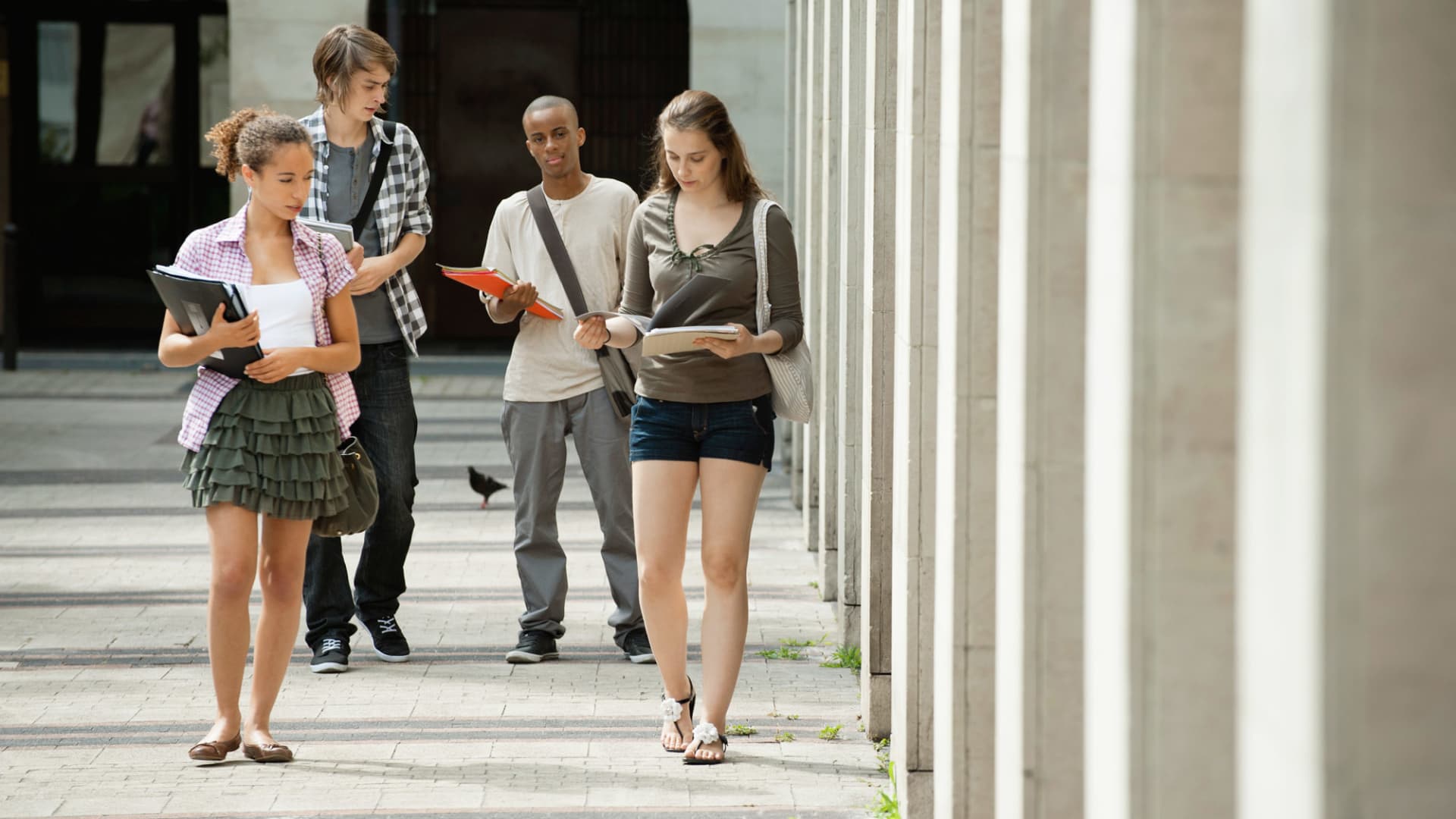Products You May Like
Even though more students feel priced out of college entirely, there are efforts to improve access to higher education that seem to be working.
In 2011, San Francisco made headlines when it became the first city in the nation to kick off a college savings account with $50 for every child entering kindergarten in the public school system.
Now those students are about to enter college.
More from Personal Finance:
Strategy could shave thousands off college costs
Public colleges aren’t as cheap as you’d think
Here’s how families are paying for college
Yadira Saavedra, 17, is one of the more than 600 students from San Francisco who will start college with financial assistance from the Kindergarten to College, or K2C, savings program.
Her parents saved $2,200 in a universal children’s savings account, which helped change her perspective about getting a degree, she said.
“My family has always pushed me to go to college, but I felt bad,” Saavedra added. “I didn’t really know how much college cost; I just knew it was a lot of money.”
This fall, she is an incoming freshman at the University of California, Davis. She plans to study archeology or sociology.
To pay the tab, Saavedra will rely on a combination of resources, she said, including the savings and need-based aid. “It means hope for me that I’m able to go to college, and I’m very proud of that.”
“These accounts have made a difference,” said José Cisneros, San Francisco’s treasurer.
College affordability is an ongoing problem.
Tuition and fees have more than doubled in 20 years, reaching $10,940 at four-year, in-state public colleges, on average, in the 2022-23 academic year. At four-year private colleges, it now costs $39,400 annually, according to the College Board, which tracks trends in college pricing and student aid.
When adding in other expenses, the total tab can be more than $70,000 a year for undergraduates at some private colleges or even out-of-state students attending four-year public schools.
That, along with ballooning student debt balances, is enough to deter many high school students from considering college.
And yet, even when families have saved less than $500, low- to moderate-income children are three times more likely to enroll in college and more than four times more likely to graduate from college than those with no savings account, according to a study by the Center for Social Development at George Warren Brown School of Social Work at Washington University in St. Louis.
“Just engaging with that account builds an awareness and aspirations,” Cisneros said.
Since the program started, the balances have grown to $15 million, he added. “Every dollar represents conversations that have been happening in households.”
“This isn’t about providing just a savings account,” said Brandee McHale, global head of community investing and development at Citi, which helped implement the program. “This is really a tool for supporting a college-going mindset.”
Moreover, the success of the program has led to adoption of similar savings initiatives across the country. There are now more than 120 universal children’s savings account programs in 39 states, according to recent data.
New York City, Boston and Los Angeles all have their own programs, which include additional funding and rewards for parents who continue to build up the balances.
San Francisco’s model also helped encourage California to launch CalKIDS, the nation’s largest children’s savings account program, in 2022.
The statewide initiative allocated $1.9 billion to fund college savings accounts of $500 each for 3.7 million low-income California public school students from first to 12th grade. Students who are in foster care or are homeless received an additional $500.
Like most other plans, the savings can be rolled into a 529 college savings account — a tax-advantaged way to save for college or other schooling and related expenses.
Saavedra, who is a first-generation college student, said she’s most excited that her younger siblings will be able to participate, as well.
“They’re going to be like, ‘My sister went to college.’ It’s going to be so much more achievable,” she said.
Subscribe to CNBC on YouTube.
